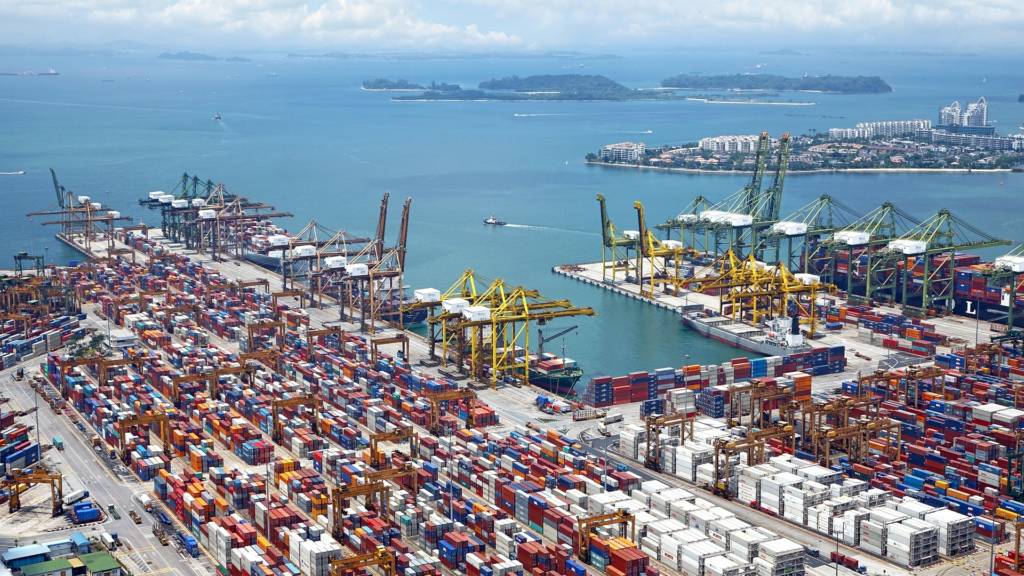From Xenocurrency to Yield, Voltron to UCP, we’ve got you covered in Part 2 (N to Z) of our Trade Finance A to Z series.
An A to Z of Trade Terms 2019: Trade Finance Debunked (Part 2 – N to Z)
We’re back for part 2 of the TFG trade finance terms (and if you haven’t already perused through Part 1, A to M, it’s just here)!
- Negotiable Instrument
- Open Banking
- Platforms (SCF, Receivables & Invoices Management Technology)
- Quotas and Tariffs
- Receivables Finance
- Securitisation
- Treasury and Cash Management
- UCP600 and URDG
- Voltron & R3 (Blockchain Consortia)
- World Trade Organisation (WTO)
- Xenocurrency and Foreign Exchange (FX)
- Yield (on Trade Finance Assets)
- Zimbabwe (Africa, Trade)

Negotiable Instrument
A negotiable instrument is a document that promises a sum of money to a specific person or assignee. Essentially, it’s a formalised IOU: a transferable, signed promise to pay the bearer a certain amount at a future time. It is essential to indicate the name or other indication of the payee on the instrument.
Open Banking
Open Banking came to the UK at the start of 2019, alongside a piece of regulation called PSD2 (for those of you who are interested in the second Payment Services Directive, we put together a more in depth article here). In plain English, the advent of Open Banking means that the customer of any regulated bank has the right to access, transfer and share personal banking data if they permiss this.
With the idea of authorised providers using your personal information to provide money management, budgeting or consolidating banking apps, it leads to more competition, increased innovation, and more transparency in and among banks and their products.
Platforms – Receivables
Receivables platforms allow corporates to reduce friction in cross-border payments with customers, suppliers and other proponents of the supply chain. We believe that global receivables platforms can seriously streamline B2B payments reconciliations, through matching invoices, paying in real time, and reducing late payments. Both Demica and Prime Revenue offer receivables and payables platforms to corporates which helps provide cash flow, sell invoices on early payment terms across multiple jurisdictions and numerous customers.

Quotas and Tariffs
In trade finance, understanding customs tariffs and import/ export quotas is key for success in cross-border trade. When importing goods from outside of the EU (although this landscape could affect EU countries in the case of a no-deal Brexit), companies will often have to pay taxes and customs duties at the border.
A tariff is a protectionist government move on imported goods to prevent exploitation of home markets. It is closely linked to the theory of comparative advantage and globalisation, which Ross McKenzie recently wrote about on TFG here.
Receivables Finance
Receivables finance (also known as receivables factoring, accounts receivables finance and payables finance) is a type of asset finance used by businesses to release early payments from outstanding invoices. A receivable can often be defined as future receivables, that is, debt owed to the company from end customers. Receivables programmes are often used to service cash flow gaps and the flow of working capital so that the business can use its funds more efficiently.
Securitisation
Securitisation helps companies raise finance against their receivables portfolios on a non-recourse basis. This means that the lender can only seize and liquidate the collateral of the company in the case of default. In the case of securitisation, a lender will normally purchase the receivables through a special purpose vehicle (SPV), which is often completely unlinked to the company. In the case of less creditworthy companies, this form of financing can often be less prohibitive and still offer financing to more risky firms. Another benefit of trade receivables securitisations is the off-balance sheet treatment of the receivables, under IFSR requirements. We spoke to Finacity’s Charles Nahum about the use of securitisation within the trade space and how it helps corporates release working capital.

Treasury and Cash Management
For any business, managing the flow of cash, assets and treasury is a key component. The ever-changing role of treasury and cash management within a business is often understated, but in a world of ever-tightening margins, increased regulatory requirements and accounting necessities, as well as the need to forecast cash flow, manage volatility and minimise shortfalls, treasury management is critical for success. For trade finance, we believe that there is a close relationship between trade and treasury, and we’ve put together a comprehensive guide on treasury, liquidity and supply chain management for industry professionals.
UCP 600 and URDG
UCP600 stands for Uniform Customs and Practise for Documentary Credits – a set of rules put together by the ICC. The latest version, the UCP 600 replaced the UCP 500 in 2007, and it incorporates and standardises rules around Letter of Credit issuance, terminology and Bills of Lading in a hefty 37 articles. We’ve summarised the key articles here.
URDG stands for Uniform Rules for Demand Guarantees, another set of ICC rules governing the obligations and rules under which guarantees and bonds are undertaken. The latest version is URDG 758.
Voltron
We mentioned Marco Polo earlier, which is a 13 bank consortium looking to use blockchain technologies to power open account trade finance on R3’s Corda blockchain network.
Voltron is a project stemming out of 12 banks which are part of the R3 consortium, aiming to digitize Letters of Credit. With around 40% of trade finance using Letters of Credit, the consortium aims to use R3’s Corda technology to pilot Letters of Credit, using the neutral party, Voltron to facilitate the instrument. The banks that are currently involved in Voltron are Bangkok Bank, BBVA, BNP Paribas, HSBC, ING, Intesa, Natwest, Mizuho, Scotiabank, SEB, CTBC, and U.S. Bancorp.

World Trade Organisation
The World Trade Organisation is an intergovernmental body which deals with trade rules between nations. With 164 member states, members are responsible for 95% of world trade. The WTO principles are based on non-discriminatory trade agreements, this means, if one country does not have a free trade agreement with another country and imposes import tariffs, the other must treat that country in exactly the same way. Currently, global tensions lie between the US and China, both playing tit-for-tat in terms of imposing trade tariffs on one another. We found an excellent guide from the Institute for Government entitled: 10 things you need to know about the World Trade Organisation.
Xenocurrency and Foreign Exchange
Xenocurrency is a fairly infrequently used term but generally refers to currency circulating in markets outside of its domestic country. A more preferential term is foreign currency / foreign exchange. For any company trading goods or services in currencies other than their own, understanding FX is crucial. One should take into account the cost of paying suppliers or consumers in other currencies, as well as volatility in currency markets which could make a meaningful impact on the balance sheet. As an example, suppose you’re a soybean producer, getting paid in GBP, but paying your workforce / day-to-day operations in USD. If the pound were to strengthen versus the dollar between the time your order was placed and the time your end customers pays, the real value and profit would decrease. Mitigating currency risk should be an important consideration for any treasury manager or FD.
Yield
When taking a view on assets under management (AUM), the yield offered by trade finance is often too small to interest banks, given the risks associated and Basel III regulations. That said, trade finance is often seen as a short-dated asset, meaning trade finance portfolios can yield higher expectations which some investors are comfortable with. With the Asian Development Bank recently reporting on the low-risk nature of trade finance as an asset class, we’ve seen alternative investors and non-bank funds move into the trade finance space, often more comfortable than banks with the risk and yields of trade finance, which have also helped plug the estimated $1.5tn trade finance gap, largely stemming out of Asia and amongst SMEs.

Zimbabwe
Zimbabwe saw a notable recovery in the economy towards the end of 2018, driven largely by a recovery in commodity prices (metals and oils), which has shifted the political outlook to a more stable, certain environment, which marks positive rhetoric to investors. The key for success in many African markets has been to open up towards foreign investment, allow for government reforms which reduce corruption and bribery. Zimbabwe is a shining example of this, although continued uncertainty around recent internet shutdowns and corruption has dampened investor confidence at the start of this year.





























